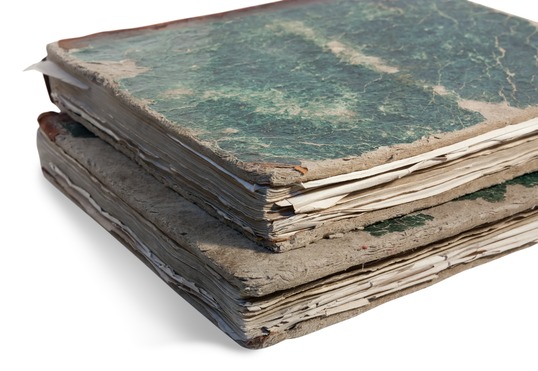
Emergency At-Home Treatments for Water-Damaged Documents
Handling documents with light damage
When possible, prop books up on a vertical plane and fan pages out as best as possible to allow the air to dry damaged documents. You can enhance the drying process by placing paper towels between pages, which has the added benefit of keeping pages from sticking together. This method should be reserved for pages with limited damage that are suitable for handling.
It is important to isolate mouldy documents as soon as possible, even if the growth is light. Mould can spread very quickly to other books and to the environment, causing further damage and presenting health hazards. As a result, they should be disposed of in appropriate areas clear of carpets, tablecloths, or other adsorbent surfaces.
Handling documents beyond home-drying solutions
Sometimes your only option will be to call in professional help. Still, you must store the damaged documents appropriately, or risk creating more work for restoration professionals. If possible, move any damaged documents onto solid, non-absorbent surfaces. Colourfast finishing is ideal for this purpose, but anywhere that prevents moisture from gathering under the documents will do.
Most importantly, do not make attempts to replicate professional freeze-drying practices. Freeze-drying is an effective process to stabilize material, halt mould growth, and prevent any further damage, but amateur efforts are often disastrous. Though the kitchen freezer may seem like an ideal way to offset further damages until help arrives, its inability to flash-freeze documents means that ice crystals will form and cause further damage.

